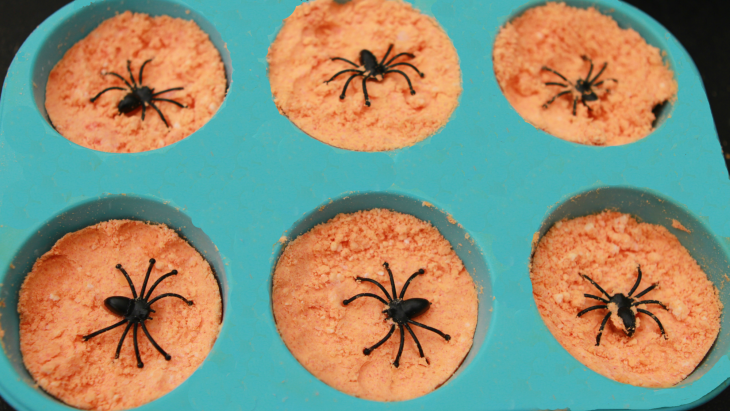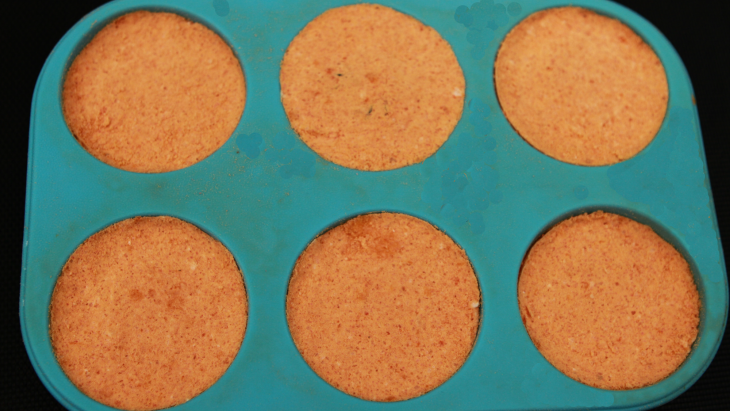Creep It Real With These DIY Halloween Bath Bombs!
- Kids
Family

By: Rachel Brittliff, Curious Kids' Science
I love Halloween. It’s an excuse to have all sorts of fun and to add a different twist to our experiments at Curious Kids' Science.
We have been messing around with the science of bath bombs at our place. What makes them fizz and spin in the bath? This week, we decided to put a Halloween spin on our experiment by using orange food colour and hiding plastic spiders inside them.
They’re pretty easy and lots of fun to use, so if you would like to have a go, then follow the instructions below.
Tools and Ingredients
You will need:
- ½ Cup bicarbonate of soda
- ¼ of a cup of cornflour
- ¼ cup of Epsom or table salt
- 3-4 teaspoons of coconut oil
- 2tsp orange food colour
- 1tsp of essential oil
- Silicone cupcake moulds
- Large bowl for mixing
- Measuring cups and spoons
- Stirring spoon
- Plastic spiders or other creepy crawly!

Method
1. Place all of the dry ingredients into the bowl and give them a good stir.
2. Add the coconut and essential oils and the food colour and stir them through.
3. If the mixture does not hold together when pressed, add a little more coconut oil.
4. Scoop the mixture into the silicone moulds so that they are ½ to ¾ full. Press the mixture so that it is packed down tightly.
5. Place a plastic spider into the middle of each of the moulds on top of the pressed mixture.
6. Fill the moulds all the way to the top with the remaining mixture and press it firmly to pack it down.
7. Leave the bath bombs to set for 4 hours before using.
The Science
The two key ingredients for making a bath bomb fizz are citric acid and bicarbonate of soda. Citric acid, as the name implies is slightly acidic and bicarbonate of soda is alkaline or basic. When acids and bases are mixed and moisture is added (in this case the bath water), a chemical reaction occurs. With the bath bombs, the reaction between the citric acid and the bicarbonate of soda creates carbon dioxide. The fizzing that you see and the bubbles around the bath bomb are the results of the reaction between the ingredients and the release of the carbon dioxide!
Love this? You'll love how to make your own lava lamp too!
For more mesmerising, screen-free, educational fun, head to Curious Kids' Science.
Reviews


